David Stairs
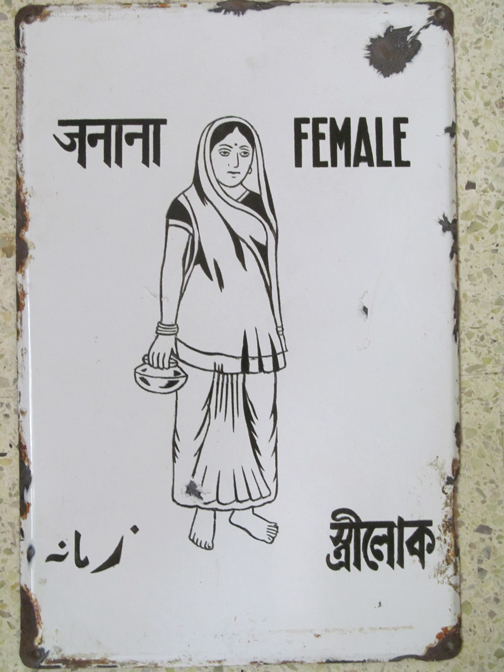
Sign for women’s washroom in Hindi, English, Urdu, and Bengali. The water is held by the right, or eating hand.
As goes its plumbing, so goes a nation; in this we do trust. The Romans supposedly poisoned themselves with lead piping, while Africans often don’t use pipes at all, preferring pit toilets and jerry cans. Indians have their own problems with hygiene; public urination is common among men.
When it comes to internal plumbing Indians have their own unique style, and it’s different from the approach to hygiene most Americans take. Indians mix and eat their food with their right hand, so you can imagine that hand washing is important, and most public eateries provide a sink. But, because of the way Indians clean themselves, it is at best impolite and at worst taboo to eat with one’s left hand. That hand is used for other, more basic functions.

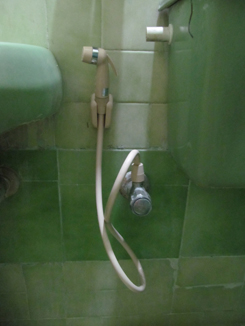 A sprayer substitutes for TP in many Indian bathrooms
A sprayer substitutes for TP in many Indian bathrooms
Consequently, Indian bathrooms have slightly different appointments than Western. Middle class families usually provide toilet paper, but public facilities, even modern malls, often do not. To a person socialized to TP, there’s a learning curve to using a hose after defecating. And public restrooms tend to be drenched in sprayed water, a messy, slippery experience overall.
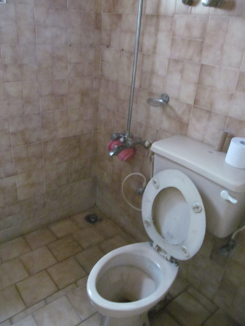
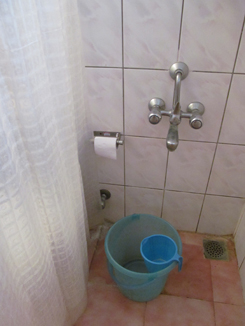 The shower at left gets everything wet; TP rack mounted inside shower at right
The shower at left gets everything wet; TP rack mounted inside shower at right
The average middle class apartment bathroom has all the usual suspects: sink, toilet, and shower, but the arrangement is sometimes curious. Many of the bathrooms I’ve been in, aside from hotels, have no shower stall. In its place, a corner with a shower head and drain. Some have accommodations for a shower curtain, but most do not. This means, if you’re not a bit restrained, the whole room gets soaked. As a consequence, Indian bathrooms are never carpeted or wall papered, and most are completely tiled.

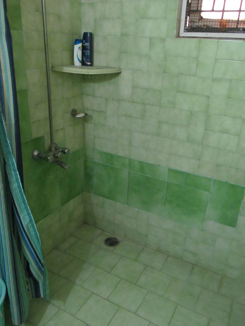
An alternative is the spigot. Some people prefer to fill a bucket with water and use a cup to bathe. I’ve tried this. It is more economical, but for pure pleasure, nothing beats a shower. Occasionally, one observes a humorous or dangerous faux pas, like in the bathroom where the toilet paper rack was mounted inside the shower curtain, or another with a light fixture located above the shower.
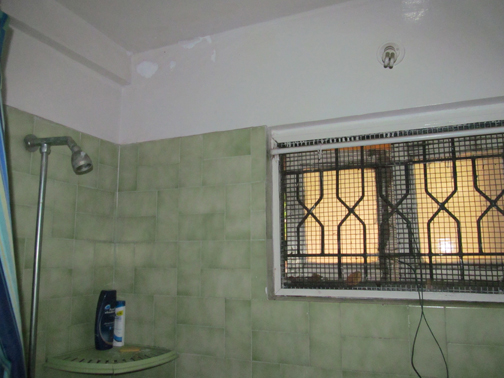
Light fixture, top right, mounted inside shower
Lastly is the water heater. These are usually small, on-call devices after the European fashion; overall a good choice in a place with inconsistent power.
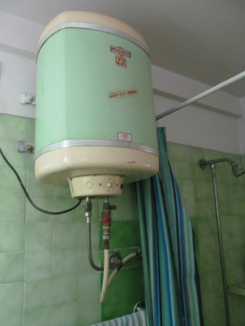
Whatever the arrangements, Indians live in a hot country where food-borne illness can be a problem and not nearly all of them can wash their cares away in holy Ganga. I suspect Indian plumbing will continue to evolve from its humble origins in the lota. And that’s all to the good.
David Stairs is the founding editor of Design-Altruism-Project











Leave a Reply
You must be logged in to post a comment.